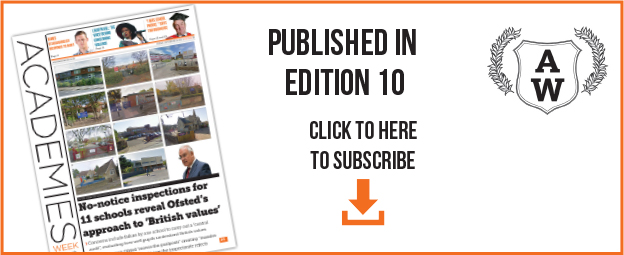Sir Michael Wilshaw’s CBI speech wasn’t about academic selection but about a move to high-quality vocational education being an equal status option available to all students
Sir Michael Wilshaw’s speech to the Confederation of British Industry earlier this month has been heavily criticised for appearing to support “streaming” at 14, and a return to the two-tier model of academic selection. However, at the heart of the chief inspector’s speech lies an important vision: one in which clusters, or federations, of schools and colleges work together to provide a range of qualifications and courses to suit all students.
University Technical Colleges (UTCs) and studio schools were designed to take a range of students from 14, not just “low ability” or “non-academic” pupils. Concerns from the Daily Mail that Sir Michael’s speech was a “tacit backing for a revival of academic selection” reveals more about an implicit snobbery over vocational education than it does about reality.
An influential report in 2013 by Thijs Bol and Herman van de Werfhorst of Amsterdam University concluded that in countries with established vocational education routes there is lower youth unemployment, and school-leavers find jobs faster. They are also likely to remain in these jobs for longer periods.
However, the “trade-off” in educational outcomes, as a result of students being streamed into particular routes, was greater inequality of educational opportunity and an increase in the effect of social origin on occupational status. Sir Michael’s proposal addresses this by suggesting that high-quality vocational education be available to all students, and that it be an equal status option. “This isn’t about selection at 14, it’s about maximum opportunity at 14,” he said.
Sir Michael is inviting the profession to explore new educational structures
Most interesting are his ideas about how these “clusters” of institutions could work together to ease student transferability. This could be exciting, depending on how far the government would be prepared to take the requisite restructuring and whether the challenges in rural areas with fewer institutions could be resolved. If students on any path were free to access specialist teaching in other institutions, many of the issues relating to the consequences of Raising the Participation Age (RPA) — such as colleges accusing schools of rejecting GCSE “failures” and the challenge faced by further education teachers to deliver results in GCSE English and maths effectively — could be significantly reduced.
There are, of course, big questions about practicality and the physical transferability of students between institutions, as well as their academic transferability. But by opening up this conversation, Sir Michael is inviting the profession to explore new educational structures: he will need to be prepared to look at local, as well as national, possibilities and options. This is a far cry from the urban centric models that we have experienced over the past decade in education.
Sir Michael argued that we are “at a watershed moment in the history of our education system”, and that there has never been a “better opportunity to tackle our lamentable record on vocational education”. If we could go beyond just encouraging collaboration between institutions and instead restructure accountability measures to focus on clusters of schools it would mean that:
• Teachers could be deployed across clusters — for example, GCSE English and maths teachers could support post-16 resits wherever they were delivered.
• Institutions would have nothing to gain by recruiting or holding on to students who would be more suited to other pathways, as the results of students in the whole cluster would be just as important as in individual schools/colleges.
• Information, advice and guidance could be provided for students covering the whole of the cluster, and schools would not demonstrate the same bias of trying to hold on to their top performers.
• Students could experience all the institutions and their specialisms from year 7 (or below) to ease transitions between them and help them to make informed choices.
Implementation would be tricky but if successful, it is an approach that might finally give pupils real choice without them being “streamed” or forced into specific paths.
Eleanor Bernades is an Associate at LKMco, a think-and-action tank








Your thoughts